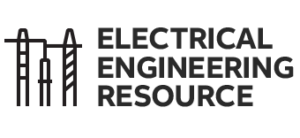5 ways plug-in circuit breakers help eOEMs deliver cutting-edge data center solutions
The rapidly growing data center market presents a major opportunity for eOEMs. Here are five ways plug-in circuit breakers can help eOEMs build a competitive advantage in this lucrative market.
Experts predict the global data center construction market will grow by a compounded annual growth rate of more than 10% between 2023 and 2029. Such dramatic growth spells opportunity for electrical OEMs (eOEMs) serving the electrical distribution needs of data centers. Here are five ways plug-in circuit breakers can help eOEMs build a competitive advantage in the lucrative data center market.
#1 Lower space constraints
From the tier-one data center to regional data centers serving local businesses, space is often at a premium. Less space used by electrical systems means more space for revenue-producing server racks. Some Plug-in circuit breakers, such as the SACE® Tmax® XT, do not require an air gap between each circuit breaker. The Tmax XT1 circuit breakers also offer a group mount option up to 125A. Two XT1 breakers place side-by-side yield a 16% space savings; whereas five XT1 breakers yield a 26% space saving.
#2 Lower inventory requirements
OEMs can also address data center space constraints by adding switchboards to their design portfolio. Instead of requiring a wall mounting, these free-standing electrical distribution systems offer more placement flexibility. Switchboards also provide higher breaker density for large-ampacity needs. Traditional panelboards are limited to 1200 amps due to the UL standard, while a switchboard can be rated up to 4000 amps. This means you can install more large-ampacity breakers in a switchboard than in a panelboard.
Normally, adding designs to a product portfolio increases inventory management challenges for the eOEM. However, since the same model of circuit breakers can be used in either switchboard or power panelboard designs, fewer circuit breaker SKUs need to be stocked and managed.
#3 Lower lead times
Not only can interchangeable SKUs make inventory management easier, but they can also lower lead times for finished product by limiting stockouts. Furthermore, as the market for switchboards and panelboards goes up, traditional manufacturers cannot always keep up with demand. Months-long lead times are unacceptable to data center operators and builders who need to add capacity quickly. This opens the door for eOEMs to get into the market with their own designs that can be delivered in a fraction of the time.
#4 Reduce maintenance
Plug-in circuit breakers allow eOEMs to offer electrical distribution systems that are easier to maintain. The plug-in design allows the circuit breakers to be easily installed and removed, without the complex assembly required by traditional strap-kit designs. In addition, the breakers can be placed anywhere on the bus stack, providing more layout flexibility. This can make maintenance and reconfiguration easier as compared to having to match circuit breaker frames across from each other, such as in a strap-kit design.
Ongoing maintenance is easier, too. The spring-loaded design of the plug-in connection maintains constant pressure over time, so there is no need to re-torque the connections on the plug-in side of the breaker as required by traditional bolt-on connections. Since there are no threaded connections, inspecting and maintaining the contact points is also unnecessary.
#5 Improved safety
Finally, reduced maintenance carries safety benefits as well. Less time maintaining systems means less time spent working on electrical components. In addition, the curved plug-in design creates a “blow-on” force during short circuit events, rather than a “blow-off” force that can lead to separation and arcing, improving the safety and reliability of the system during fault conditions.
When maintenance is required, ABB switchboard and power panelboard bus stacks are designed to IP20 specifications, providing a finger-safe barrier that minimizes the chance of personnel touching live parts during maintenance. IP20 finger-safe barriers are also available for the ABB ReliaGear plug-in breakers.
Flexibility meets market opportunity
With artificial intelligence and the proliferation of data driving ever-increasing demand for data center capacity, the market for electrical distribution technologies is set to accelerate in direct proportion. eOEMs that can adapt to the needs of the data center market will be those that capitalize on this tremendous growth. Plug-in circuit breaker technology is just one way ABB supports its eOEM customers as they seek to take advantage of exciting new market opportunities.
See related blog post “Learn the 4 key benefits of plug-in breakers“.
—
Thomas Chrysler
Product Marketing Manager – NEMA Smart Power products
Jian Gentile
Product Marketing Manager




